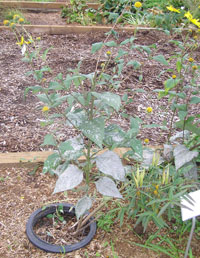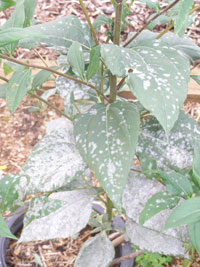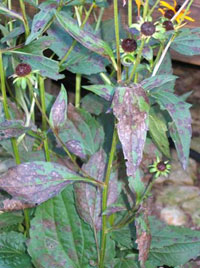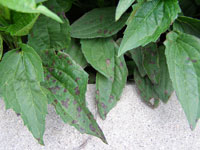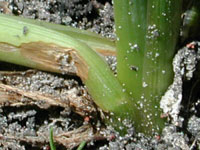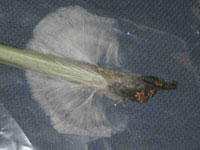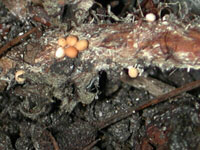Extension > Garden > Diagnose a problem > What's wrong with my plant? > Annuals and Perennials > Black Eyed Susan (Rudbekia) > Spots on leaves
Black Eyed Susan (Rudbekia) > Spots on leaves
1 of 3
Powdery Mildew
Erysiphe cichoracearum
- Powdery, fluffy white spots and blothces on leaves, stems, and flower parts
- Tiny black round spheres may be visible within white spots late in the season
- Spots typically start on lower leaves but can spread to cover the entire plant
- Severely infected leaves may be completely covered in white or grayish white fungi
- In some cases, leaves become curled or twisted or turn yellow due to the infection
- More information on Powdery Mildew
2 of 8
Septoria Leaf Spot
Septoria rudbekiae
- Irregular purplish black leaf spots, often with one side flat along a leaf vein
- Mature leaf spots often have gray center
- Leaf spots typically start on the lower leaves but can spread to the entire plant
- Leaves with many appear completely black, dried up and tattered
- In severe infections all of the leaves of the plant will appear black
- More information on Septoria Leaf Spot
3 of 3
Southern Blight
Sclerotium rolfsii
- Leaves turn yellow then brown from the edges inward and wilt
- The base of the stem may be brown or discolored
- Often seen after warm wet weather
- Tiny tan to reddish brown hard spheres and white cottony growth can be seen at the base of infected leaves or in the soil around infected plants



